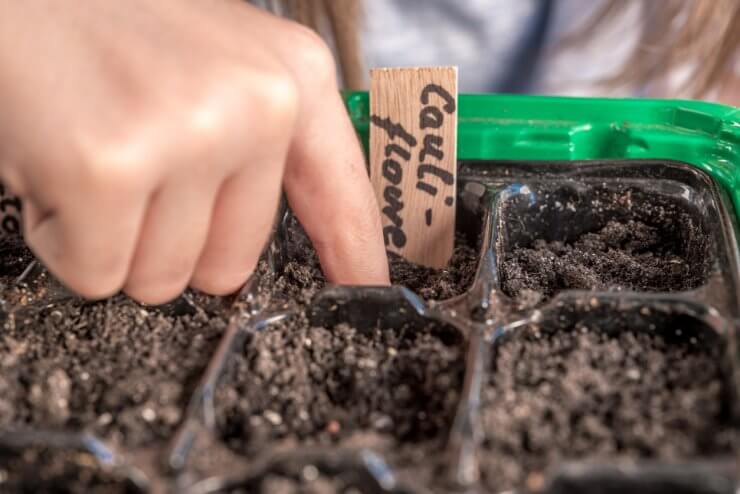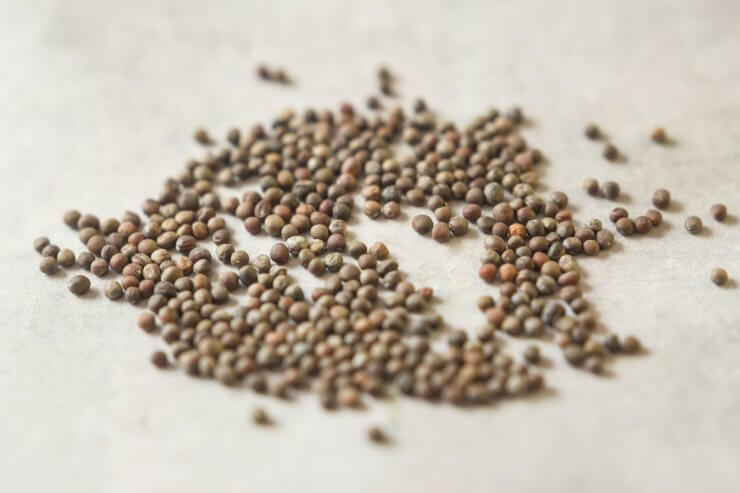
Planting cauliflower seeds
You can choose to grow your cauliflower from seeds or seedlings, starting seeds indoors or outside directly in the garden. And when it comes to choosing seeds, be sure to gauge the length of time your climate stays in that desired 60s range of temperatures for the variety you’re considering.
Keep in mind, it might be tempting to choose one of the fast-maturing cultivars for spring planting and a summer harvest, but some gardeners swear that a fall crop of a tried and true slow-growing variety is the only way to go for outstanding flavor.
Whatever you choose, make sure it’s quality seed to protect your crop, and always use sanitary practices when planting.
You can grow cauliflower anywhere you have around 60 days —depending on the variety—of average daily temperatures below 75 degrees F, with nighttime temperatures above freezing. A light frost won’t hurt the plants much.
Starting seeds indoors
If you’re looking for an early summer crop, start seeds indoors in peat pots about four to six weeks before the last expected frost date in your zone. Sow the seeds 1/4 to 1/2 inch deep in peat pots (peat pots let you plant the entire pot and avoid root damage from removing the plant from the pot).
Place the pots on a 70-degree warming tray and set it near the sunniest window in your home. Keep the soil moist, but not soggy.
Wait until your seedlings have at least five true leaves—in addition to the initial “seed leaves” or cotyledons—before transplanting them to your garden. This will take about four to six weeks to achieve. Before transplanting, harden off your seedlings by putting them outdoors for a brief period each day, lengthening the time period daily, to get them used to outdoor conditions.
Move seedlings permanently outdoors two to four weeks before the last frost date, planting each seedling 24 inches apart.
Choose a spot for your plants that gets six hours or more of sun a day, preferably with a little shade in the hottest part of the day. (Remember, if you can’t get natural shade, install floating row covers to protect your plants from the heat of the sun.)
Consider testing your soil to determine its acidity. Cauliflower likes its soil with a nearly neutral to slightly acidic pH, adequate drainage, and air circulation.
Planting directly in the garden

Cauliflower seeds
If you’re planting directly in the garden, choose a spot as noted above. If you’ve done a soil test, work in organically rich compost, bone meal, or lime as recommended by the testing laboratory. The pH should be between 6.0 and 7.0.
Till the soil to loosen it to a depth of 12 to 15 inches, then work in a 3-inch layer of compost or garden soil, into the top 6 inches of native soil. Soil needs to be rich in organic matter, as cauliflower is a heavy feeder.
Sow seeds 1/2 deep and 24 inches apart, in rows 3 feet apart. Sow seeds four to five weeks before the last spring frost date. In cool climates, you can also sow seeds in late summer for a fall harvest. In that case, plant seeds in the ground two to three months before the average first frost date.
Water consistently during germination and growth.
Also, while cauliflower grows in many soil types, from clay to loamy sand, keep in mind that you want your soil to have a high moisture-holding capacity in the summer, since water stress will damage your crop. Apply a 5-10-10 fertilizer when planting, as fertile soil holds in moisture.
Have you successfully grown cauliflower from seeds? Did you sow them in pots indoors or directly in the garden?


 Previous
Previous

